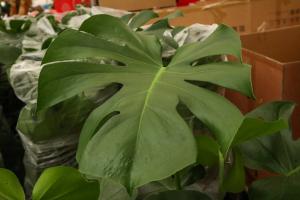Can Daikon Radish Plants Grow in Salt Water?
Daikon radish, also known as white radish, is a popular vegetable in Asian cuisine. It is known for its crispy texture and mild, slightly sweet flavor. While it is commonly grown in soil, there has been recent interest in growing daikon radish plants in salt water. The question is, can this be done? In this article, we will explore the feasibility of growing daikon radish plants in salt water.
The Effects of Salt Water on Daikon Radish Plants
Salt water has a high concentration of dissolved salts, mainly sodium chloride. These salts can have various effects on plants, depending on their tolerance level. While some plants can tolerate high levels of salt, others can be severely affected, leading to growth reduction or death.
Daikon radish plants are not known for their salt tolerance. In fact, they are considered moderately sensitive to salt. When exposed to saline soil or water, they can develop symptoms such as yellowing leaves, stunted growth, and reduced yield. This is because the salts in the water disrupt the balance of nutrients and water uptake in the plant, causing stress and damage to the roots, leaves, and stems.
The Challenge of Growing Daikon Radish Plants in Salt Water
Growing daikon radish plants in salt water is not an easy task. It requires careful planning, monitoring, and management to ensure the plants receive the right amount of nutrients, water, and light. The main challenge is to maintain the proper balance of salt and other minerals in the water, as well as to prevent the accumulation of toxins and pollutants that can harm the plants and the environment.
One approach to growing daikon radish plants in salt water is to use hydroponics, a soil-free method of cultivating plants in nutrient-rich water. Hydroponics allows for better control of the growing conditions, such as pH, salinity, and temperature, and can reduce the risk of diseases and pests. However, it requires a dedicated system of pumps, filters, and sensors, as well as a source of clean water and nutrients, which can be costly and complex.
The Benefits of Growing Daikon Radish Plants in Salt Water
Despite the challenges, there are some potential benefits to growing daikon radish plants in salt water. One is that it could expand the range of places where they can be grown, such as arid or coastal regions where freshwater is scarce or expensive. Another is that it could reduce the use of chemical fertilizers and pesticides, which can pollute the soil and water and harm human health and the environment.
Moreover, growing daikon radish plants in salt water could lead to the discovery of new varieties or traits that are more adapted to saline conditions, which could in turn benefit other crops and ecosystems. It could also promote innovation and collaboration among scientists, farmers, and entrepreneurs, who could exchange knowledge and resources to develop sustainable and profitable solutions for food and agriculture.
The Bottom Line: More Research is Needed
While growing daikon radish plants in salt water is technically possible, it is still a nascent field with many unknowns and challenges. More research is needed to determine the optimal growing conditions, the best cultivars, and the potential risks and benefits of this approach. It is also important to consider the social, economic, and ethical implications of growing food in non-traditional ways, and to involve all stakeholders in the decision-making process.
Overall, the question of whether daikon radish plants can grow in salt water cannot be answered with a simple yes or no. It depends on many factors, including the goals, resources, and constraints of the growers and the consumers. However, with the right knowledge, skills, and mindset, it is possible to explore and test new ways of producing food that are more resilient, sustainable, and equitable.

 how many times do yo...
how many times do yo... how many planted tre...
how many planted tre... how many pine trees ...
how many pine trees ... how many pecan trees...
how many pecan trees... how many plants comp...
how many plants comp... how many plants can ...
how many plants can ... how many plants and ...
how many plants and ... how many pepper plan...
how many pepper plan...
































